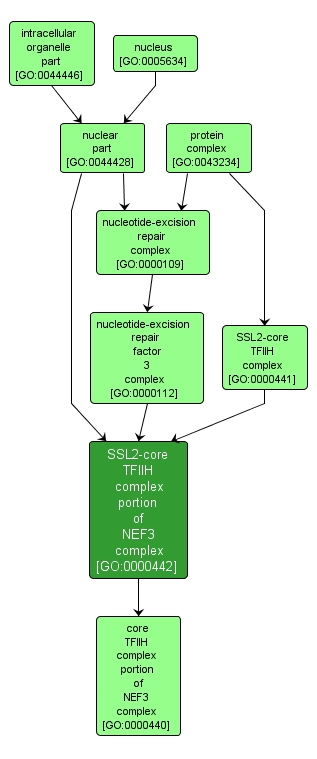| Desc: |
The SSL2-core TFIIH complex when it is part of the nucleotide-excision repair factor 3 (NEF3). It is composed of the tightly associated 5 subunit core TFIIH subcomplex plus one additional, less tighly associated subunit. The subunits are well conserved from yeast to humans. In S. cerevisiae, the 5-subunit core is composed of Rad3, Tfb1, Tfb2, Ssl1, Tfb4 and the loosely associated subunit is Ssl2p (also called Rad25). In humans, the 5 subunit core is composed of ERCC2, p62, p55, p44, p34 and the loosely associated subunit is XPB. |














